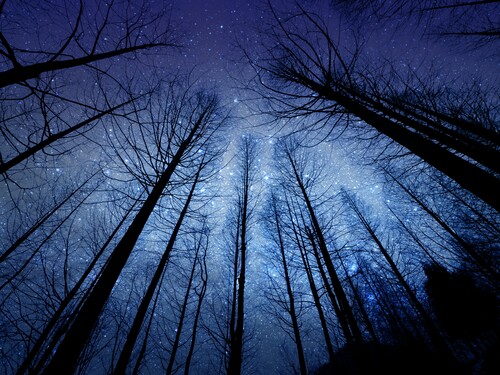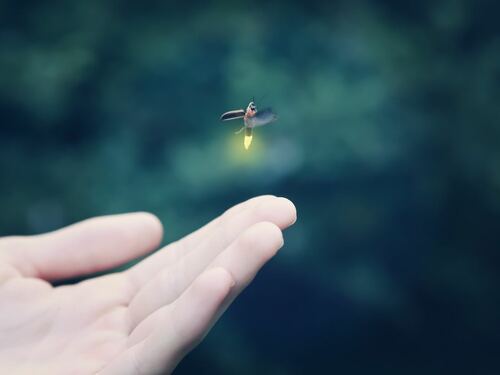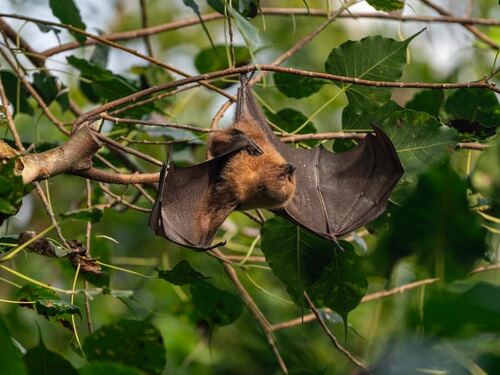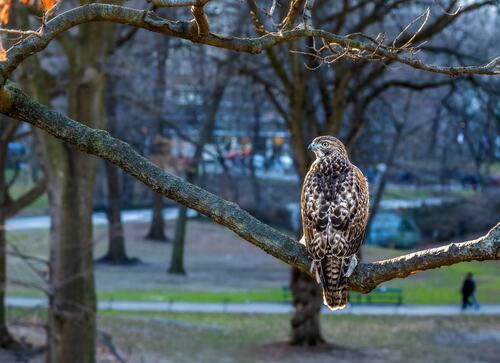Urban Trees: Nighttime Havens for Nocturnal Wildlife in 2024
Introduction
Did you know that the trees lining your city streets are secret sanctuaries for a hidden world that comes alive after dark? In 2024, urban trees are more important than ever for our nocturnal neighbors. A recent study by the Urban Ecology Institute found that cities with 30 percent more tree cover saw a staggering 50 percent increase in nocturnal wildlife diversity. From the soft hoots of owls to the scurrying of opossums, these leafy giants host a plethora of wildlife activity.
Urban trees play a crucial role in supporting nocturnal wildlife by providing essential shelter, food sources, and connectivity in fragmented city landscapes. They offer protection from predators and harsh weather conditions, serve as nesting sites for birds and small mammals, and create roosting spots for bats and other flying creatures. Moreover, urban trees form vital corridors that allow nocturnal animals to move safely through otherwise inhospitable urban environments.
The importance of urban trees for nocturnal wildlife extends beyond mere shelter. They are a cornerstone of the urban ecosystem, supporting a diverse array of species that have adapted to city life. From common mammals like raccoons and opossums to night-active birds such as owls and nightjars, these animals rely on urban trees for their survival in an increasingly urbanized world.
The Vital Role of Urban Trees for Nocturnal Animals

Bare Trees Under a Starry Sky
Urban trees are more than just decorative elements in our cities; they’re lifelines for nocturnal wildlife. Let’s explore the various ways these trees support our night-active neighbors:
Shelter and Protection
Urban trees provide crucial shelter for nocturnal animals, offering protection from both natural and human-made threats. The dense canopies of mature trees creates a buffer against harsh weather conditions, while the intricate network of branches and leaves offers hiding spots from predators.
- Nesting Sites: Many nocturnal birds, such as owls , find ideal nesting locations in the cavities of older urban trees.
- Roosting Spots: Bats , which play a vital role in urban ecosystems, use trees as daytime roosting sites.
- Ground-level Refuge: Fallen leaves and underbrush around trees provide cover for small mammals and reptiles.
Movement Corridors
In the fragmented landscapes of urban areas, trees serve as essential connectors for wildlife movement.
- Green Highways: Rows of street trees create corridors that allow animals to move safely through the city.
- Stepping Stones: Isolated trees in parks or yards act as stepping stones, connecting larger green spaces.
- Canopy Bridges: For arboreal species, overlapping tree canopies form aerial pathways above busy streets.
Nocturnal Wildlife Species Benefitting from City Trees

A Raccoon Peeks from Behind a Tree Trunk
A surprising variety of nocturnal wildlife calls our urban areas home, thanks in large part to the presence of trees. Let’s meet some of these nighttime city dwellers:
Common Urban Nocturnal Mammals
- Raccoons: These adaptable creatures use trees for denning and as highways through the urban landscape.
- Opossums: North America’s only marsupial often seeks refuge in trees during the day.
- Bats: Various bat species roost in tree cavities or under loose bark.
Night-Active Birds
- Owls: Species like the great horned owl and barred owl nest in large urban trees.
- Nightjars: Common nightjars and nighthawks can be spotted swooping for insects around city lights.
Insects and Their Importance
The relationship between urban trees and nocturnal insects is crucial for the entire ecosystem:
- Moth Diversity: Trees support a wide variety of moth species, which are important pollinators.
- Fireflies: These beloved insects rely on trees and understory vegetation for their life cycles.
- Predatory Insects: Nocturnal predators like praying mantises use trees as hunting grounds.
Amphibians and Reptiles
Even cold-blooded creatures benefit from urban trees:
- Tree Frogs: Species like the gray tree frog find homes in urban trees.
- Geckos: In warmer cities, introduced gecko species often inhabit trees and buildings.
How Urban Trees Provide Food for Night-Active Animals

A Great Horned Owl Rests in a Forested Setting
Urban trees aren’t just shelters; they’re also vital food sources for nocturnal wildlife. Here’s how they nourish the nighttime ecosystem:
Fruit, Nuts, and Seeds
Many urban trees produce edible resources that nocturnal animals rely on:
- Berry-producing Trees: Species like mulberries and cherries provide food for various animals.
- Nut Trees: Squirrels and other rodents cache nuts from oak and hickory trees for nighttime foraging.
- Seed-bearing Trees: Maples and other trees with winged seeds (samaras) offer food for birds and small mammals.
Insect Buffet
Trees host a multitude of insects , creating a food web that supports larger nocturnal species:
- Bark-dwelling Insects: Woodpeckers and nocturnal mammals feed on insects living in tree bark.
- Leaf-eating Insects: Caterpillars and other leaf eaters become food for bats and birds.
- Flying Insects: Trees attract flying insects, which in turn attract insectivorous bats and birds.
Nectar for Night Pollinators
Some urban trees play a special role in supporting nocturnal pollinators:
- Night-blooming Species: Shrubs like night-blooming jasmine provide nectar for moths and bats.
- Extended Bloom Times: Some trees continue to produce nectar into the evening, benefiting crepuscular pollinators.
The Impact of Light Pollution on Urban Nocturnal Wildlife

A Glowing Firefly Flies Away from a Person’s Hand
While urban trees provide numerous benefits to nocturnal wildlife, the issue of light pollution poses significant challenges:
Effects on Animal Behavior
Artificial lighting can disrupt natural behaviors of nocturnal animals:
- Foraging Patterns: Excessive light can alter when and where animals search for food.
- Breeding Cycles: Light pollution may interfere with the mating calls and rituals of various species.
- Migration: Bright city lights can disorient migrating birds and insects.
Trees as Light Buffers
Urban trees play a crucial role in mitigating the effects of light pollution:
- Light Screening: Dense canopies can block or diffuse artificial light, creating darker spaces for wildlife.
- Creating Dark Corridors: Rows of trees along streets can form shaded pathways for nocturnal movement.
Wildlife-Friendly Lighting Strategies
Cities are increasingly adopting lighting practices that consider nocturnal wildlife:
- Directional Lighting: Using fixtures that focus light downward reduces sky glow.
- Warm-colored LEDs: Switching to warmer-colored lights is less disruptive to wildlife.
- Motion Sensors: Installing motion-activated lights reduces unnecessary illumination.
Success Stories
Some cities are leading the way in Dark Sky Initiatives:
- Tucson, Arizona: This city has implemented strict lighting ordinances to protect its nocturnal ecosystems.
- Flagstaff, Arizona: Recognized as the world’s first International Dark Sky City .
Challenges Facing Urban Trees and Nocturnal Wildlife

A Bat Hangs from a Tree Branch – Photo by Fabian Kessler
Despite their importance, urban trees and the nocturnal wildlife they support face several challenges:
Habitat Fragmentation and Loss
As cities grow, green spaces often shrink:
- Development Pressure: Urban expansion often results in the removal of mature trees.
- Isolated Green Spaces: Remaining habitats become disconnected, limiting wildlife movement.
Climate Change Impacts
Changing climate patterns affect both trees and wildlife:
Heat Stress:
Urban heat islands
put additional stress on trees and nocturnal animals.
Altered Phenology:
Changes in seasonal timing can disrupt the synchronization between wildlife and their food sources.
Human-Wildlife Conflicts
Coexisting with nocturnal wildlife in urban areas can be challenging:
- Noise Complaints: Nocturnal animal sounds may be perceived as nuisances by residents.
- Property Damage: Some animals, like raccoons, may cause damage while foraging.
Invasive Species Threats
Nonnative species can disrupt urban ecosystems:
- Invasive Plants: Some introduced tree species may outcompete natives, reducing habitat quality.
- Invasive Animals: Nonnative predators or competitors can threaten native nocturnal species.
Conservation Efforts and Urban Planting for Nocturnal Biodiversity

An Urban Forest is Fragmented by a Highway – Photo by Chen Ichun
To address these challenges and support urban nocturnal wildlife, cities are implementing various conservation strategies:
Tree-Planting Initiatives
Many cities are actively increasing their urban canopy:
- Diverse Species Selection: Planting a variety of native trees supports a wider range of wildlife.
- Age Structure Management: Ensuring a mix of young and mature trees provides diverse habitats.
Creating Wildlife-Friendly Urban Spaces
Urban planners are incorporating wildlife needs into city design:
- Green Corridors: Connecting green spaces with tree-lined paths facilities wildlife movement.
- Habitat Gardens: Encouraging residents to plant wildlife-friendly gardens complements public efforts.
Citizen Science Projects
Engaging the public in nocturnal wildlife monitoring:
- Bat Detection Programs: Volunteers use special detectors to record bat activity in cities.
- Owl Surveys: Annual counts help track urban owl populations.
Biodiversity-Focused Policies
Progressive cities are adopting policies that prioritize urban biodiversity:
- Tree Protection Ordinances: Laws that prevent the unnecessary removal of mature trees.
- Wildlife-friendly Development Standards: Requiring new developments to incorporate habitat features.
Conclusion

A Hawk Perches on a Tree in a City Park
Urban trees are the unsung heroes of our nighttime ecosystems, providing crucial support for a diverse array of nocturnal wildlife. From offering shelter and food to creating vital corridors through our concrete jungles, these leafy giants play an indispensable role in maintaining biodiversity right at our doorsteps. Next time you take an evening stroll, look up at the trees lining your street—you might just catch a glimpse of the secret nocturnal world they harbor!
By valuing and protecting our urban forests, we’re not just greening our cities; we’re ensuring that the fascinating creatures of the night continue to thrive alongside us. Contact Arborist Now today so we can work together to create urban spaces where both humans and nocturnal wildlife can flourish under the soft glow of the moon and stars.


